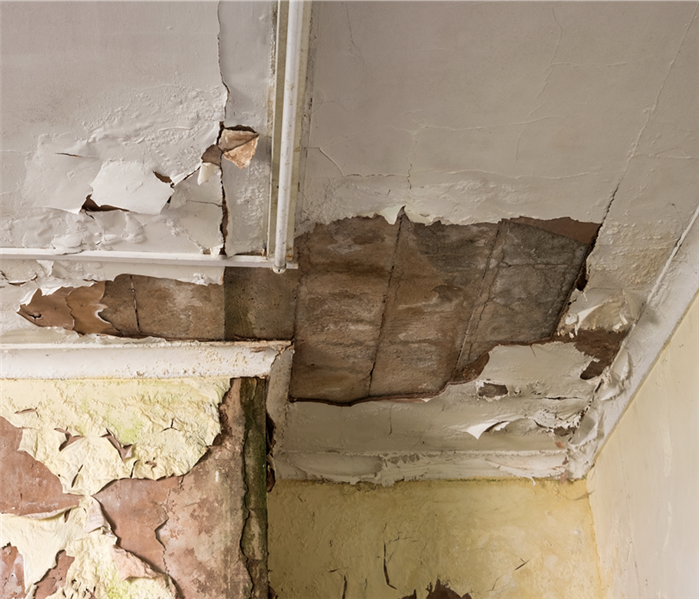How to Protect Your Home Against Water Intrusion
10/21/2023 (Permalink)
Water intrusion is a serious threat to the structural integrity of your home. From minor issues like leaky faucets to major incidents like floods, water can cause significant damage to your property and lead to expensive repairs. One of the most effective ways to prevent water intrusion is regular exterior maintenance. In this blog post, we will explore some of the crucial steps to safeguard your home against water intrusion.
Inspect Your Roof
Regularly inspect your roof for any signs of damage or wear and tear. Look out for missing or damaged shingles, rusted or corroded flashing, or cracks in the chimney. Any of these issues can lead to water intrusion. Be sure to address any roof damages promptly before they escalate into more severe problems.
Clean Your Gutters and Downspouts
Clogged gutters and downspouts can cause water buildup on your roof, leading to leaks and water intrusion. Clear out any debris from your gutters and downspouts to ensure that water flows away from your home properly. Make sure that downspouts are positioned so that water drains at least three feet away from your property.
Repair Cracks in Your Foundation
Inspect the foundation of your home for any visible cracks. Even minor cracks can allow water to seep into your property, leading to significant damage over time. Use waterproofing sealants to repair any cracks and prevent water intrusion.
Install Proper Drainage Systems
Proper drainage systems around your home can help prevent water intrusion and direct water away from your property. Consider installing French drains, sump pumps, or other drainage systems that move water away from your foundation and lessen the likelihood of water infiltration.
Seal Exterior Openings
Check for any gaps or openings around your windows, doors, and vents. Seal up any exterior openings with caulk or weatherstripping to prevent water intrusion.
Landscaping can also be an important component in preventing water intrusion. Make sure that the grading of your landscaping slopes away from your foundation, directing water away from your home. Trim trees and branches near your home that can rub against your roof or siding and cause damage.
Check for Proper Ventilation
Proper ventilation in your home can help avoid issues such as condensation, which can lead to mold and water damage. Check that vents in your bathroom and kitchen are working correctly and that your attic has enough ventilation to prevent moisture buildup. If you notice any pooling water around your property, take immediate action. Pooling water can cause significant damage over time and increase the likelihood of water intrusion. Use a wet vacuum to remove any standing water around your foundation, and address the cause of the pooling.
Regularly inspect your property, keeping an eye out for any signs of water intrusion. Be vigilant for damp spots, mold, mildew, unusual odors, or staining on ceilings or walls. The sooner you detect a problem, the easier and less costly it will be to address.
Hire Professional Help
By taking the necessary steps to safeguard your property against water intrusion, you can prevent costly water damage and enjoy peace of mind in your home. Regular exterior maintenance can go a long way in avoiding water infiltration, but it's also important to stay vigilant and address any issues promptly. With a little effort and attention, you can protect your home from water intrusion and reduce the risk of damage.



 24/7 Emergency Service
24/7 Emergency Service
